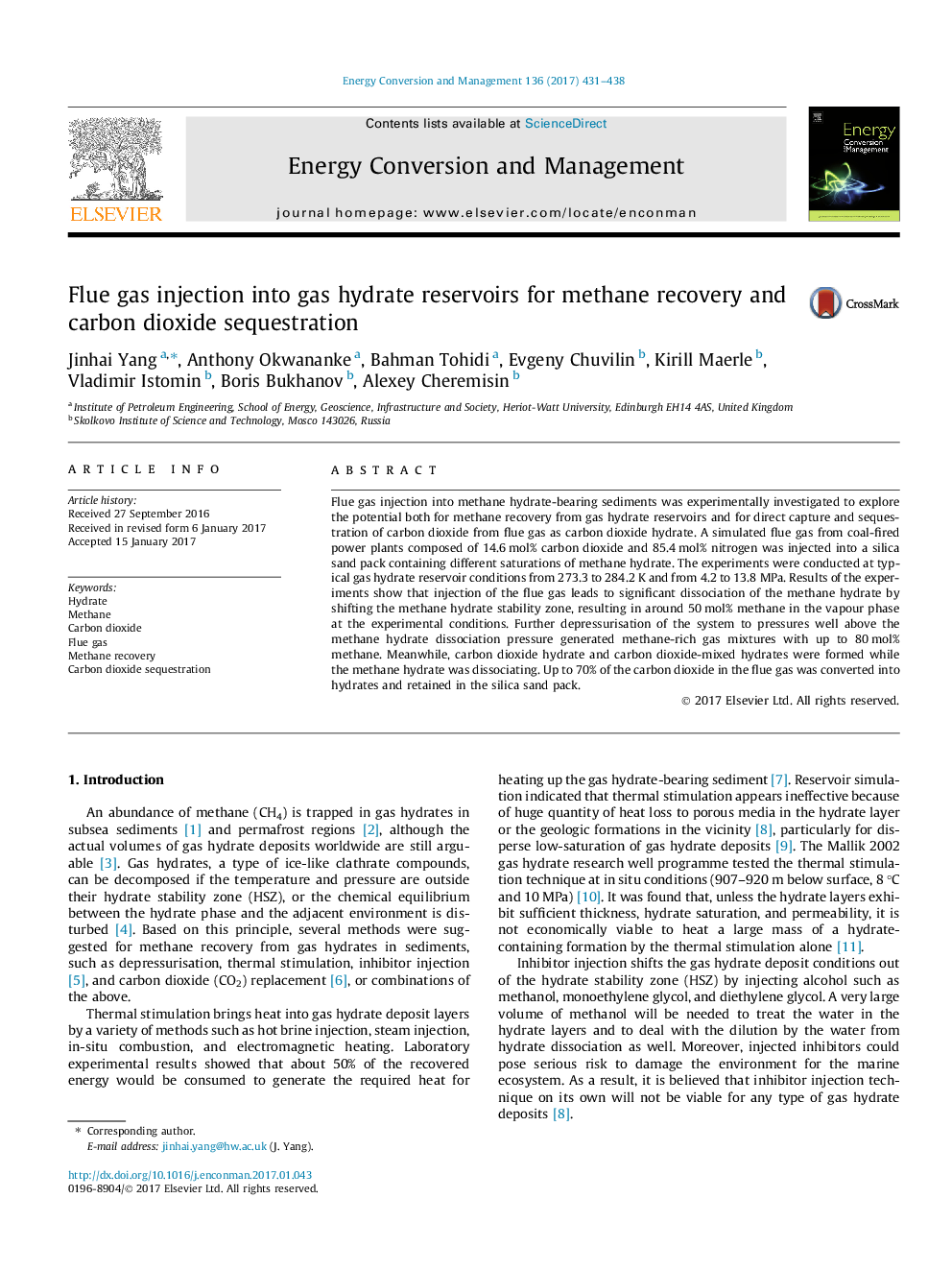| Article ID | Journal | Published Year | Pages | File Type |
|---|---|---|---|---|
| 5013166 | Energy Conversion and Management | 2017 | 8 Pages |
Abstract
Flue gas injection into methane hydrate-bearing sediments was experimentally investigated to explore the potential both for methane recovery from gas hydrate reservoirs and for direct capture and sequestration of carbon dioxide from flue gas as carbon dioxide hydrate. A simulated flue gas from coal-fired power plants composed of 14.6Â mol% carbon dioxide and 85.4Â mol% nitrogen was injected into a silica sand pack containing different saturations of methane hydrate. The experiments were conducted at typical gas hydrate reservoir conditions from 273.3 to 284.2Â K and from 4.2 to 13.8Â MPa. Results of the experiments show that injection of the flue gas leads to significant dissociation of the methane hydrate by shifting the methane hydrate stability zone, resulting in around 50Â mol% methane in the vapour phase at the experimental conditions. Further depressurisation of the system to pressures well above the methane hydrate dissociation pressure generated methane-rich gas mixtures with up to 80Â mol% methane. Meanwhile, carbon dioxide hydrate and carbon dioxide-mixed hydrates were formed while the methane hydrate was dissociating. Up to 70% of the carbon dioxide in the flue gas was converted into hydrates and retained in the silica sand pack.
Related Topics
Physical Sciences and Engineering
Energy
Energy (General)
Authors
Jinhai Yang, Anthony Okwananke, Bahman Tohidi, Evgeny Chuvilin, Kirill Maerle, Vladimir Istomin, Boris Bukhanov, Alexey Cheremisin,
